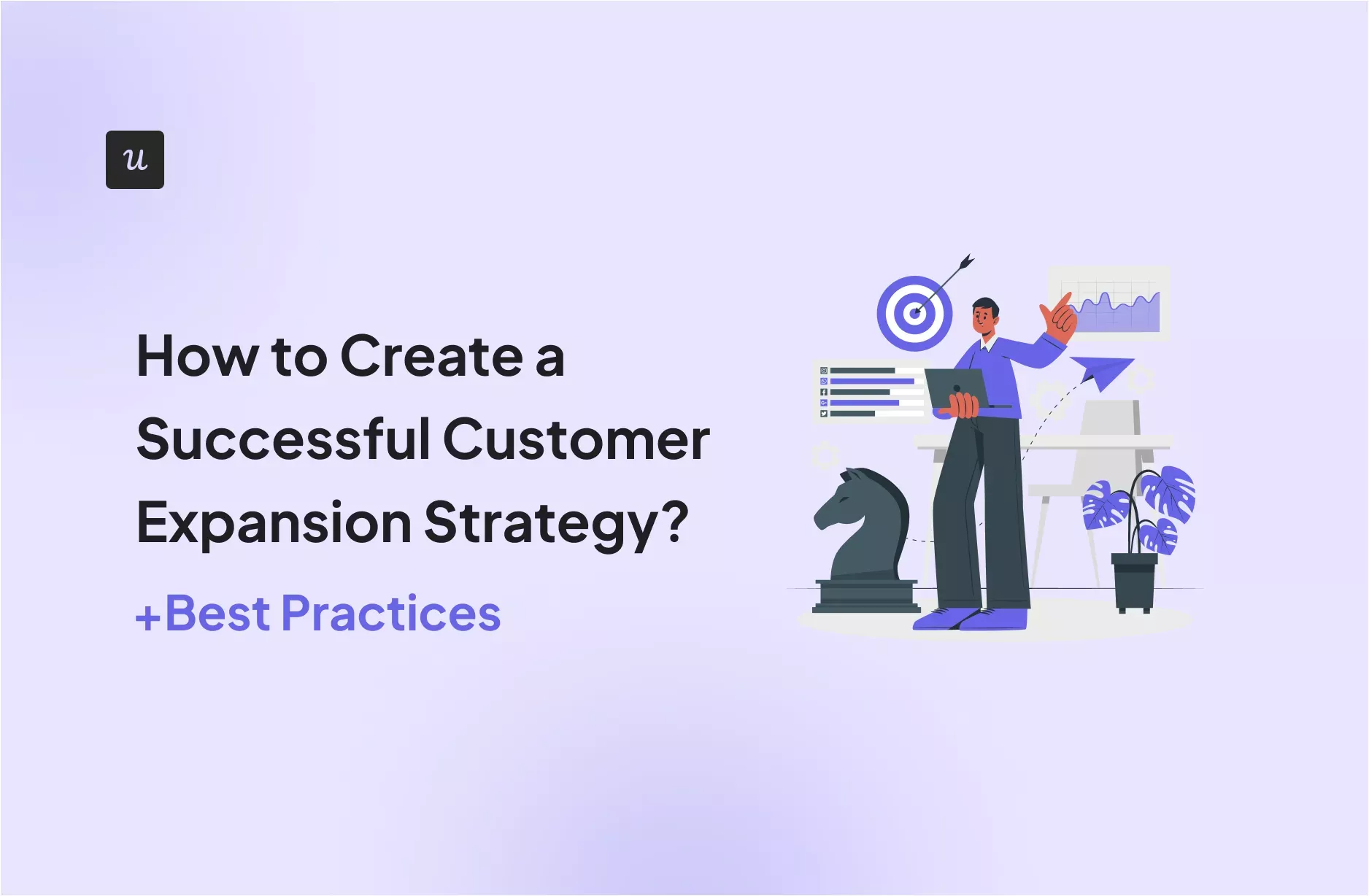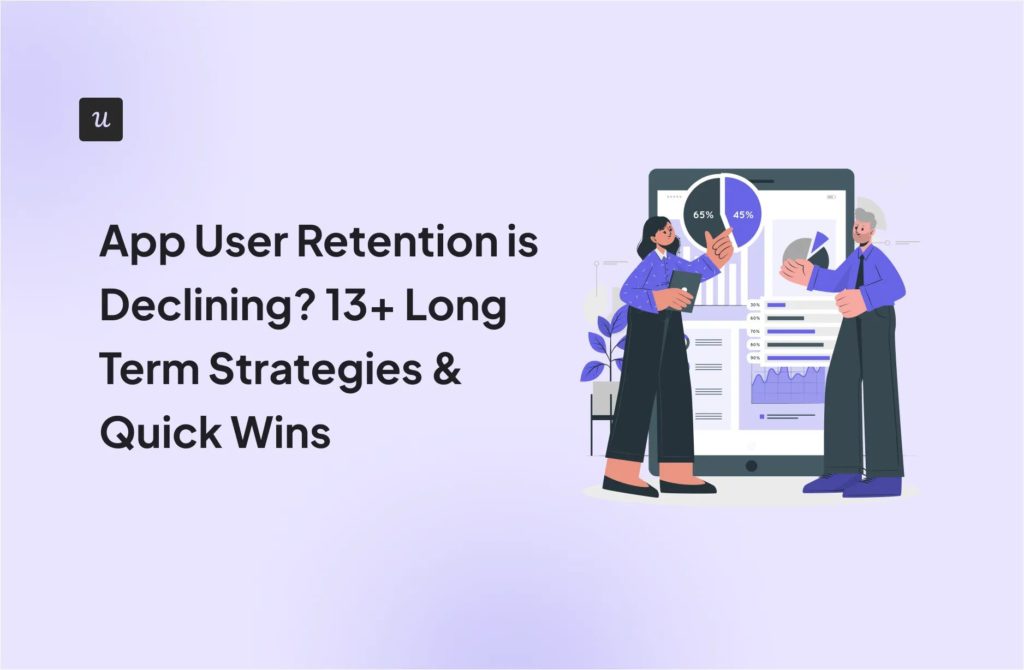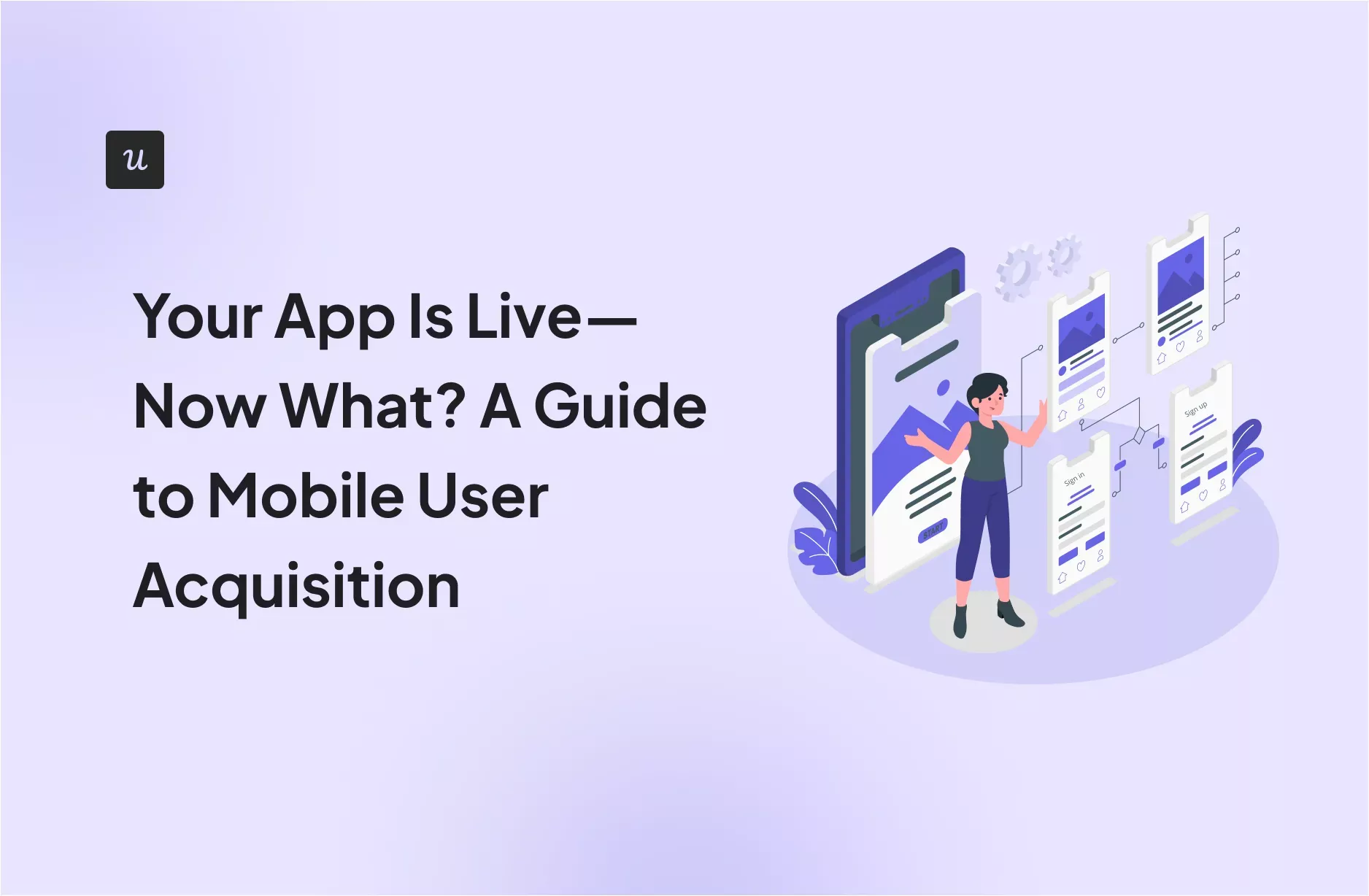
How to Create a Successful Customer Expansion Strategy? (+Best Practices)
What if you could boost revenue without having to invest a small fortune in new customer acquisition?
While it may sound too good to be true, the reality is that you can achieve this by implementing an effective customer expansion strategy.
In this article, you will explore why customer expansion matters for your SaaS growth, discover various customer expansion tactics, and learn how to embed them in successful expansion campaigns.
Get The Insights!
The fastest way to learn about Product Growth, Management & Trends.
What is a customer expansion strategy?
A customer expansion strategy is a playbook for increasing the revenue from your existing customers, for example, by selling them additional products and services or encouraging them to upgrade to higher plans.
On a lower level, the term is used to describe specific expansion tactics, like upselling.
How to calculate customer expansion revenue?
The customer expansion revenue rate measures the recurring revenue growth from existing customers. This metric helps SaaS companies track the effectiveness of their expansion efforts.
To calculate the rate, deduct the expansion monthly recurring revenue (MRR) at the beginning of the month from the expansion MRR at the end. Next, divide it by the revenue from the previous month and multiply by 100.
So, if your company’s Expansion MRR increased from $5,000 at the beginning of the month to $7,500 by the end of the month, and the previous month’s total revenue was $50,000, the revenue expansion rate would be 5%.
[(7,500-5,000)/50,000] x 100 = 5%

Why is customer expansion so important?
Customer expansion drives recurring revenue and long-term growth. By increasing the value provided to existing customers through different expansion tactics, companies can reduce churn and enhance customer lifetime value.
Customer expansion is also more cost-effective than acquiring new customers, as it leverages existing relationships. Existing customers who have experienced your product value need way less convincing to buy an additional product or pay for extra capabilities.
Ultimately, customer expansion ensures more stable, predictable revenue streams, which is essential for the scalability and sustainability of any business.
Different types of customer expansion
Here are the four most common customer expansion strategies for SaaS companies.
Customer expansion through upselling
Upselling is a customer expansion strategy where you convince the customer to upgrade to a higher plan.
SaaS companies do it by limiting access to their killer features in the lower plans. To realize the full value of the product, users need to upgrade.
For example, Grammarly offers only a limited number of premium suggestions in its free plan. To get unlimited access, the customer has to purchase a premium plan.

Customer expansion through add-ons
Add-ons are additional features that enhance core product functionality. They aren’t essential, but they increase the product value.
For example, Zoom offers add-ons like audio conferencing, cloud storage, large meetings, or premium support. These are available only to paying customers.

Customer expansion through cross-selling
Cross-selling is when the existing customer buys another product from your offerings. In contrast to add-ons, these are complementary standalone products.
For example, CyberGhost VPN customers get a chance to purchase their other security tools, like a dedicated IP or CyberGhost Security Suite for Windows. These are available at the checkout at discounted prices.

Customer expansion through user-based and usage-based pricing plans
The final way to drive customer expansion is through user-based and usage-based pricing tiers.
Companies like Slack, Asana, or Notion charge their customers per seat. If there are 15 team members on your team, you need to pay for each of them. As your team grows and you hire new people or other departments adopt the tool, the number of seats needed increases.

Usage-based pricing works in a similar way. At Userpilot, the number of monthly active users (MAUs) affects the price. The start plan includes up to 2,000 MAUs, and if the customer needs more, they need to upgrade to the Growth plan.
In both cases, the SaaS company’s revenue increases as their customers’ needs grow, and this requires no effort on their part.
How to create a successful customer expansion strategy?
Having covered the types of account expansion, let’s look at specific tactics that can help you expand your revenue.
1. Segment customers to find those with high expansion potential
Segmentation allows you to identify those customers that are ready to upgrade or purchase additional products. For instance, satisfied customers or those with high license utilization.
What metrics should you consider?
- Product usage patterns and engagement levels (those who use the product more than others).
- Feature adoption (users who use more advanced features).
- Customer satisfaction score and customer loyalty (NPS).
With Userpilot, you can segment users based on multiple criteria, including:
- Demographics, like age, language, or location.
- In-app behavior, like events they’ve completed, features they’ve used, or in-app flows they’ve engaged with.
- Survey responses (quantitative for all surveys and qualitative for NPS).
- Company details, like size or industry.
- Technographics, like operating system or device type.

2. Map out the customer journey to identify expansion opportunities
Mapping out the user journey helps you understand how users engage with the product and the best times and stages to engage them.
Start by mapping out the key stages in the journey, for example, awareness, acquisition, activation, adoption, retention, and revenue.
At each stage, identify the key touchpoints, focusing on those that you could use to drive expansion.
For example, the payment page could be a touchpoint on the acquisition or revenue stage (depending on your acquisition model), and you can use it to sell add-ons or other products.
Next, list user actions at each touchpoint as well as their emotions and challenges. For example, users might feel anxious about signing up for a paid plan.
The key here is to map out the actual user actions and not what you think happens. You can do it by conducting a path analysis, which is a visualization of all user activities leading up to an event.

3. Determine the features to offer to existing customers
The effectiveness of your customer expansion efforts depends on how you structure your pricing tiers.
The idea is to give users on the free or cheapest plan enough features to allow them to experience product value. However, not enough to satisfy all their needs because they won’t have any motivation to upgrade otherwise.
For example, the lowest plan of an analytics tool may offer only basic reports, like funnels, while more advanced ones, like attribution analysis, could be included in the higher plans.
Alternatively, you can give them access to all features in the lowest plan but put a cap on the usage of the most advanced functionality.
How can you find such features?
- Collect customer feedback about features they find most valuable.
- Track feature usage to identify the most frequently used features.
Userpilot allows you to collect customer feedback via in-app surveys and automatically track all user actions in your app. You can then visualize the data as trends, funnels, and paths.

4. Create personalized campaigns for each segment
Segmentation helps you not only find the right targets for your account expansion campaigns but also optimize the campaigns for maximum impact.
Because here’s the thing:
Customers with different needs are going to respond to different prompts. A feature that’s absolutely essential to one user persona might not be that relevant for another.
For instance, creating invoices is vital for a small business proprietor but not so much for an accountant.
That’s why you need to personalize the secondary and tertiary onboarding flows to help users discover the functionality that they need.
Start by segmenting them based on their use cases. Leverage welcome surveys to gather the data.
Next, identify the most relevant functionality for each segment, as shown above, and create flows.
Finally, use your insights from customer journey analysis to identify the best times to trigger the flows.
All of which can be done in Userpilot.

5. Train customer success teams to identify and act on expansion opportunities
An effective account expansion strategy requires a well-trained customer success team.
Here’s how you can prepare your customer success managers for the role:
- Equip them with in-depth product knowledge—the features and add-ons—and how they enhance the product experience and perceived product value.
- Train them to actively listen for clues during their conversations with customers about their evolving needs, goals, and challenges.
- Teach them to use data to identify customers who are ready for expansion.
- Educate them about common expansion triggers, like growing team size.
- Offer training on how to communicate expansion opportunities in a natural and customer-centric way that doesn’t feel salesy or pushy.
6. Monitor the performance of your expansion strategy
Does your expansion strategy work? You won’t know until you start monitoring key expansion metrics, like your expansion revenue or customer lifetime value.
Such high-level metrics show you if your strategy is effective but don’t necessarily help you understand why or why not.
For more in-depth insights, pay attention to:
- Expansion revenue per segment to see how well-tailored your campaigns are.
- Downgrade or churn rates in expanded accounts to see if your upgrades deliver lasting value.
Dig even deeper to identify the most successful strategies. For example, track user engagement with your in-app flows and look into correlations between their completion and upgrades or cross-sells to assess how effective they are.
That’s a lot to keep a pulse on, isn’t it?
Well, you can easily track the metrics from one of Userpilot’s analytics dashboards. There’s a ready-to-use Expansion Revenue & Upgrades dashboard, and you can create custom ones, too.

Best practices for maximizing customer expansion revenue
Let’s wrap the article up by looking at three ways to optimize customer expansion efforts in your SaaS.
Drive customer expansion by leveraging FOMO
Fear of missing out—or FOMO—is one of the most persuasive mechanisms that can get users to upgrade. Sometimes, users just need to see what they’re missing out on to take that leap.
Miro is a great example of teasing users without surrendering full functionality:

The company convinces users to upgrade to a premium plan by making all boards public by default and promoting private boards as a premium feature.
If you’re using a free account, then Miro will let you create up to three boards. However, you’ll be shown a reminder that the boards are public whenever you create a new one. This hints at the fact that upgrading would be beneficial to those who need private boards.
Trigger upgrade messages contextually
When you ask your customers to upgrade is almost as important as how you ask them. Loom is a company that has applied this principle to its in-app messaging.
After the user finishes recording a video, they get a compelling micro-video prompt to test out a premium feature that removes the ums, uhs, and other filler words.
Considering the fact that most recordings will contain a lot of these filler words, Loom has managed to find the perfect moment to promote their tool—exactly when the user hears the filler and wishes it wasn’t there.
At the end of the day, context is everything!

Drive customer expansion with reverse trials
Many SaaS companies combine freemium with free trials. The user gets free access to basic product functionality. At some point in the future, they get an invite to try out the premium plan for a limited period.
Reverse trials flip the script.
The user gets access to the premium features as soon as they sign up. When the trial finishes, for example, after 14 days, as in the example below, they automatically get downgraded to the free plan – unless they pay up and upgrade.
In both instances, the idea is that once they use the premium functionality, users don’t want to go back to the free plan. The reverse trial reinforces the effect because the privileges they’ve always enjoyed get suddenly withdrawn.

Conclusion
Customer expansion promotes product growth by getting the most out of existing customer accounts. This is a much more sustainable growth strategy because it doesn’t rely on acquiring new customers, which is resource-intensive.
An effective customer expansion strategy requires an accurate assessment of customer needs and an in-depth analysis of user behavior throughout their journey.
If you’d like to see how Userpilot can help you collect relevant customer data and leverage the insights to drive account expansion in-app, book the demo!








